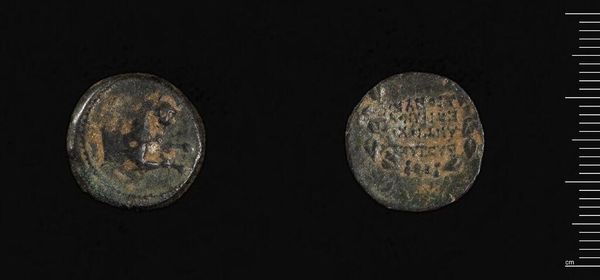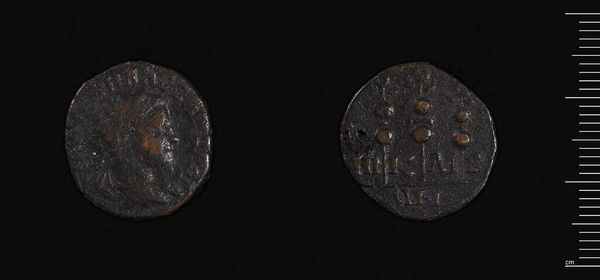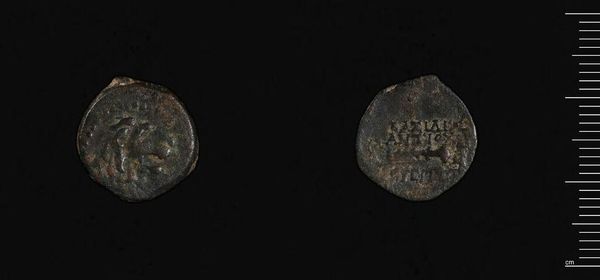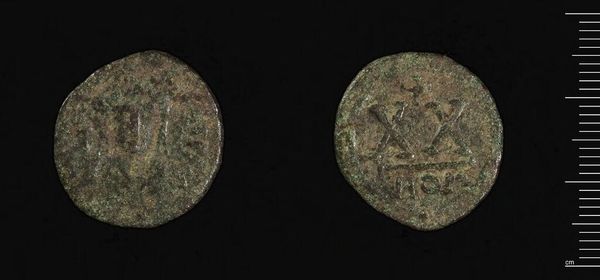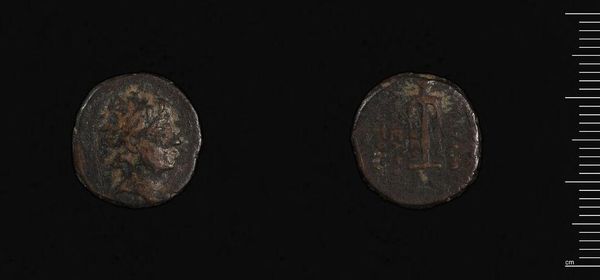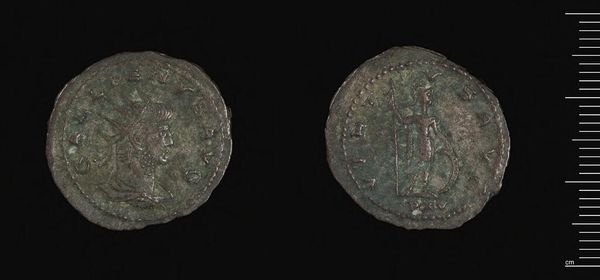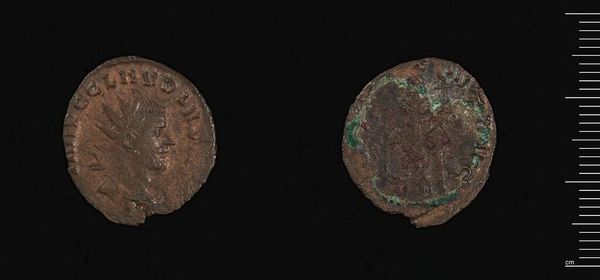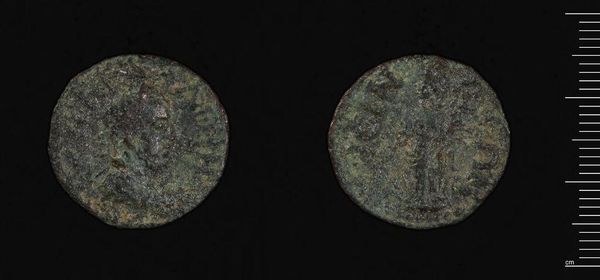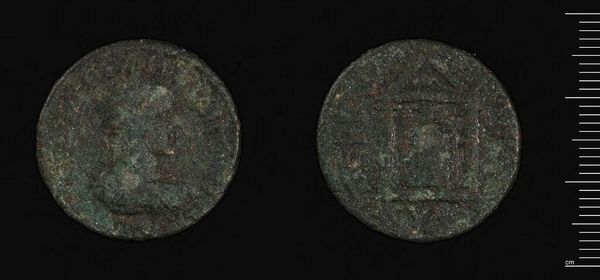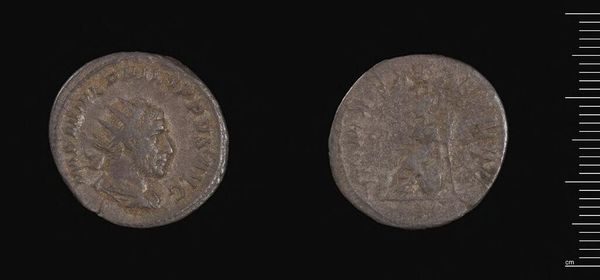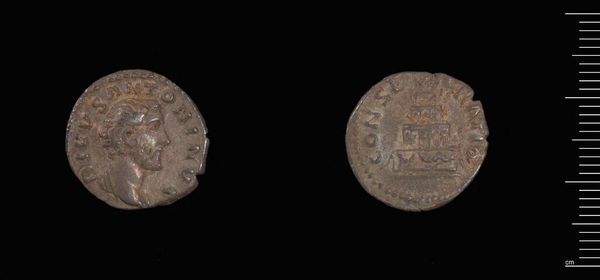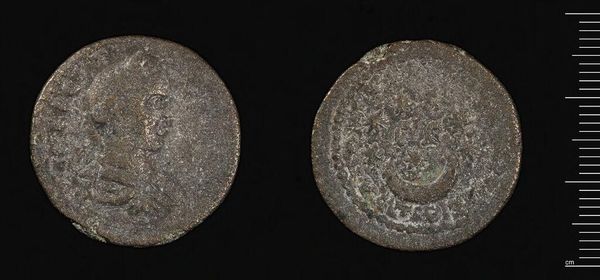
Dimensions: 2.98 g
Copyright: CC0 1.0
Curator: Here we have a Follis of Constantine I, minted in Thessalonica. It's a small bronze coin, less than 3 grams in weight, currently residing at the Harvard Art Museums. Editor: It looks well-worn; you can see how the daily grind has softened the details and shifted the image. I wonder about the hands that touched it, its place in commerce. Curator: Absolutely. These coins were tools of imperial propaganda. Mass produced and distributed, bearing the image of the emperor himself, Constantine. Editor: So, it's an artifact of power but also of everyday life, minted to facilitate trade and to disseminate a carefully constructed image of imperial authority. Who designed it? What were the conditions of the mint? Curator: These coins speak volumes about the socio-political climate of the time, the early days of Constantine's reign and the shifting landscape of power within the Roman Empire. Editor: It's intriguing to consider how something so small could carry such weight, both literally in its metal content and figuratively in its symbolic representation. Curator: Precisely; it's a reminder that even the smallest object can reveal vast histories. Editor: A material testament to the reach of empire.
Comments
No comments
Be the first to comment and join the conversation on the ultimate creative platform.
